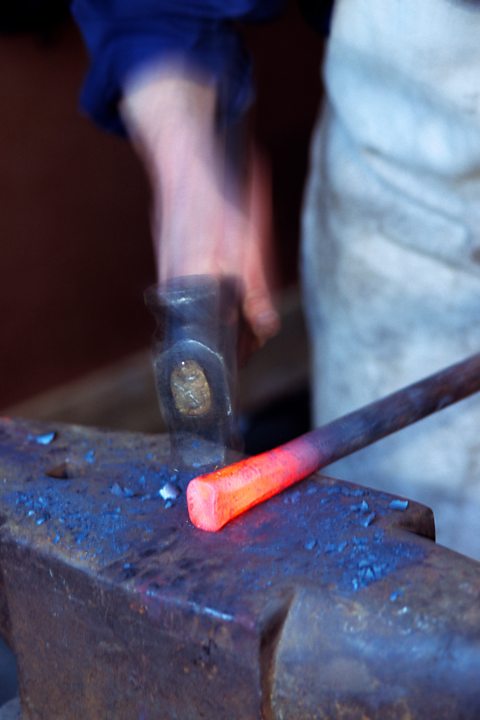Machine tool processes for metals
Shaping and forming processes

There are a variety of processes involved in the use of machine tools for working with metals.
Cold forming involves shaping metal without heat treatment either manually or using a jig, while hot forming uses heat to aid the shaping and forming of the metal.
Folding is basically using a hide mallet to bend the metal over over bending bars that are secured in a engineer's vice.
Sinking – also known as hollowing – involves using a bossing mallet to shape metal into a bowl shape using a mould or sandbag to create the desired shape.
Scrolling involves using a jig to shape metal into curves
Similar to scrolling, bending jigs can be used to bend metal bars into a precise angles or hold them in position to allow the bars to be twisted.
One of the oldest forms of processing metals is forging. This involves heating metal and using a variety of different hammers and tools to shape and bend it. This is generally done with an anvil while the workpiece is held in position with tongs.
Heat treatment processes
There are a couple of specific processes that utilise heat that can alter metal.
Annealing is a heating process that softens metal, making it more malleableCapable of being hammered or pressed into a new shape without being likely to break or return to the original shape. to allow it be easily shaped.
Harding is a heating process in which metal is heated almost to the point of melting and then cooled very quickly, usually in cold water. This makes the metal hard but also makes it brittle.
Tempering is a heating processes that usually follows on from harding. It also subjects metal to temperatures just below melting point but it allows the metal to cool slowly. This reduces the hardness and brittleness and makes the metal ductileA ductile material is capable of being drawn into thin sheets or wires without breaking. and easier to work with.
There are also a couple of processes that use heat that are specfic to working with plastics.
Line bending is a heating device that allows for heat to be transferred onto plastic along a line and for the plastic to then be folded to a desired angle.
Forming uses an oven similar to a conventional oven. The plastic sheet is placed in the oven then heated all the way through till its malleableCapable of being hammered or pressed into a new shape without being likely to break or return to the original shape.. It can then be shaped around a forming jig.